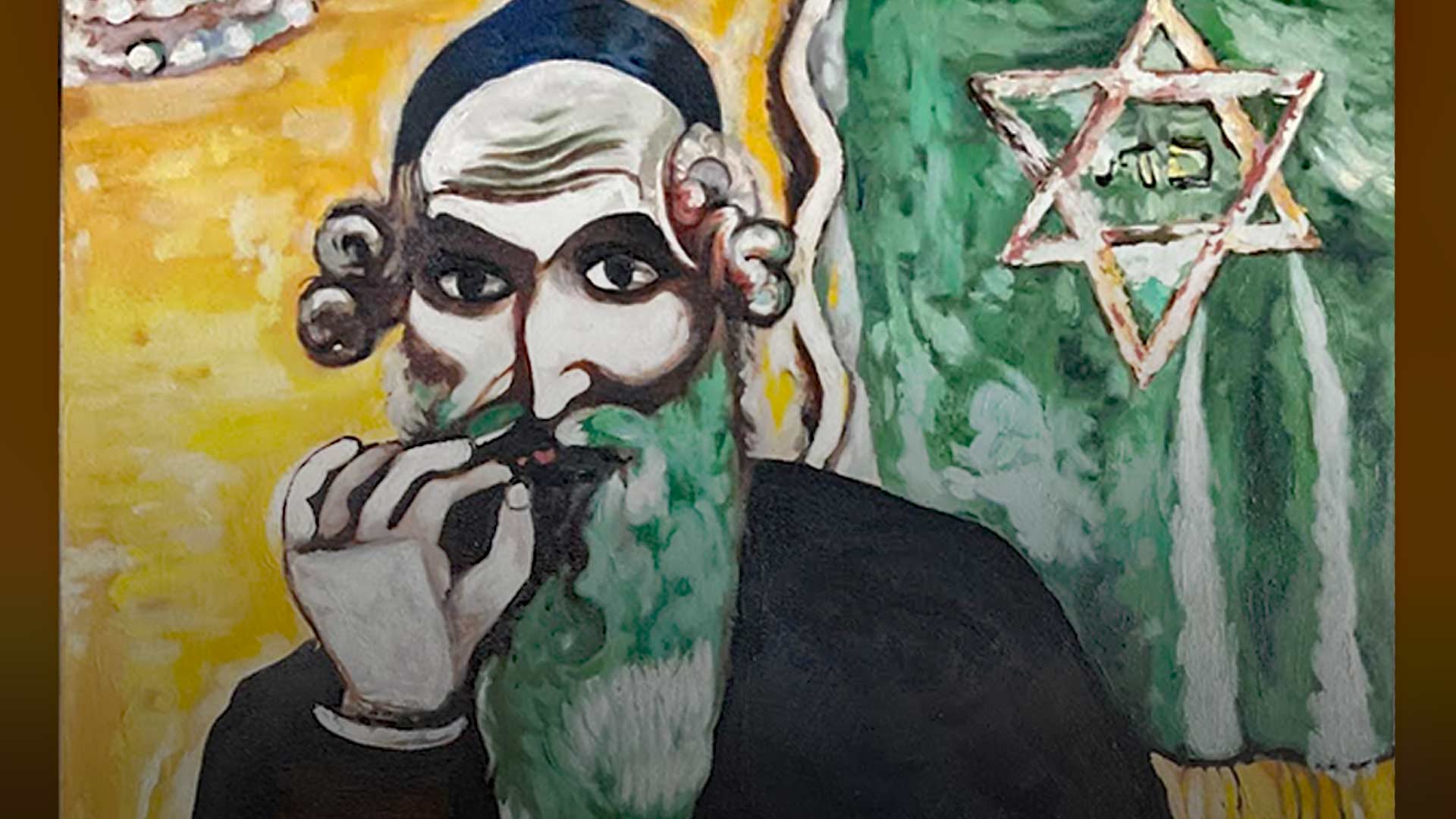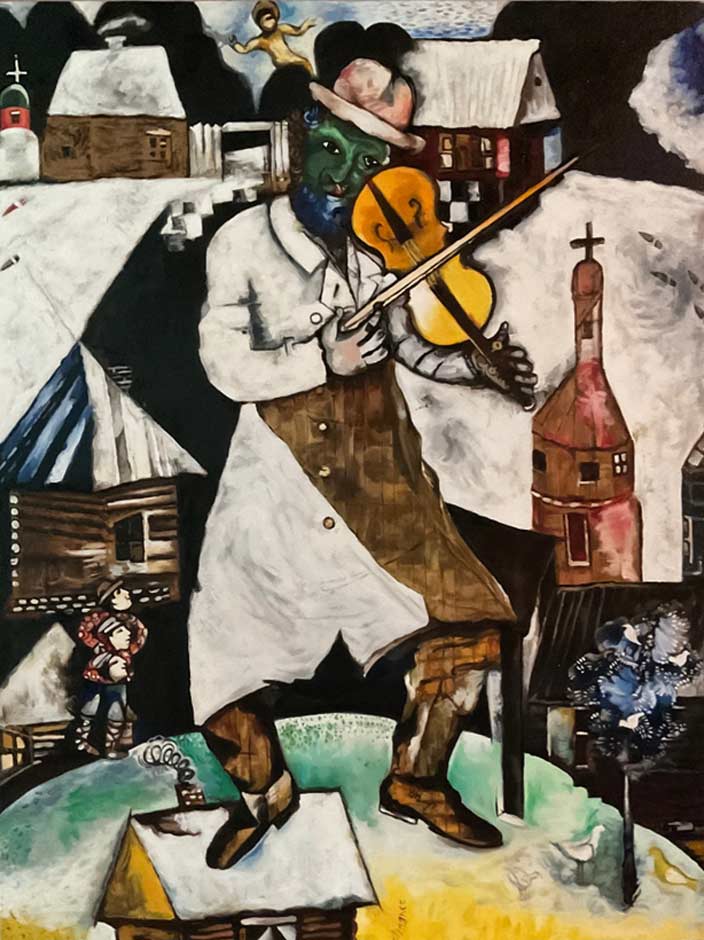

The two most important Jewish holidays are Rosh Hashanah (the Jewish New Year) and Yom Kippur (the Day of Atonement), both “High Holy Days” that are celebrated as a period of reflection and repentance. Rosh Hashanah is a two-day traditional Jewish holiday. This year it falls on Oct. 2-4, at the start of the Jewish New Year.
In the Jewish theological tradition, Rosh Hashanah is the birthday of the world, when God created the earth 5,784 years ago. The literal translation of Rosh Hashanah is “Head of the Year,” so named to emulate the human head controlling its body; the day of Rosh Hashanah affects the whole year.
In connection with the upcoming Rosh Hashanah, it is imperative to remind the world about a prominent Jewish artist Marc Chagall, representing a symbol of peace and mutual healing – the one element Jews most long for. It’s a process in which all parties grow through deep healing in the relationship between people.
Chagall (Moshe Segal) was born July 7, 1887, in Vitebsk, Belorussia, Russian Empire (now Belarus). He died March 28, 1985, in Saint-Paul, Alpes-Maritimes, France.
In 1906, at age 19, he left his hometown for St. Petersburg, then the center of the Russian intellectual and artistic world. There he studied at the Imperial School for the Protection of the Fine Arts and at the Zvantseva School of Drawing and Painting under renowned Russian artists of the time, including Léon Bakst.
In May 1911, Chagall arrived in Paris, where he enrolled at the Académie de La Palette and settled at La Ruche studios in Montparnasse in the south of Paris, mixing with other Jewish immigrant artists, including Amedeo Modigliani and Chaim Soutine; as well as key figures in French modernism, among them Guillaume Apollinaire and Robert Delaunay.
“Despite all the troubles of our world, in my heart I have never given up on the love in which I was brought up or on man’s hope in love. In life, just as on the artist’s palette, there is but one single color that gives meaning to life and art—the color of love.” – Marc Chagall
Chagall was destined to become the eminent painter of the most complete edition of the Hebrew Bible (i.e., Christian Old Testament). The Hebrew Bible, also known as the Tanakh, is made up of ancient writings in Hebrew and Aramaic languages.
Indeed, Chagall’s art was mainly inspired by the Hebrew Bible throughout his entire life. His unique combination of Surrealism, Cubism, Russian folk traditions and Fauvism propelled him to the top of the artists’ community in Paris. Chagall’s Orthodox Hasidic upbringing and family roots – with strong religious traditions – are evident in his paintings, such as “Pinch of Snuff.” This piece depicts a Hasidic Jew in a traditional attire, sitting quietly and chewing a “magic potion” (tobacco) that brings emotional happiness and fictional fantasy.
According to an ancient Hasidic parable, “… when the flow of God’s love poured out into the earth’s basin, it broke into countless fragments of individual things, in each of which still lives a spark of divine love.”
Chagall intended to capture this spark in his art.

“Pinch of Snuff” is currently exhibited in New York’s Metropolitan Museum of Art. In the upper left, a pearl necklace evokes the threads of Chagall’s childhood days in the Hasidic community in Vitebsk. A black yarmulka (a skull cap worn in public by Orthodox Jewish men or during prayer by other Jewish men) covers the man’s curls. In the background, the golden star of David glows over a curtain of intense green color, symbolizing Chagall’s hope for a better future, as he expresses in his prayer:
“God, You who hide in the clouds, or behind the shoemaker’s house, bare my soul, the aching soul of a stuttering child, show me my way. I don’t want to be like everyone else; I want to see a new world.”
Chagall left his unique mark on Modern Art, with colorful works, encompassing Surrealism, Neo-Primitivism and Fauvism. Throughout his 75-year career, he produced nearly 10,000 works – warm, human, pictorial, universal, full of personal metaphors and inspired by Jewish traditions, Russian fairy tales and his own delirious dreams.
He created the majestic ceiling of the Opéra Garnier in Paris and The Sources of Music and The Triumph of Music murals painted in 1966 for the Metropolitan Opera House at New York’s Lincoln Center. After his death in 1985, he left behind an impressive artistic heritage and colossal legacy of love and peace for all humanity.
Let us pray like Marc Chagall for the world peace and harmony that Elias (a Hebrew prophet) will bring. Shabbat Shalom with love to all.
The views expressed here are those of the author.








1 Comment
Great article. Nice to see some positivity in this bulletin for a change.